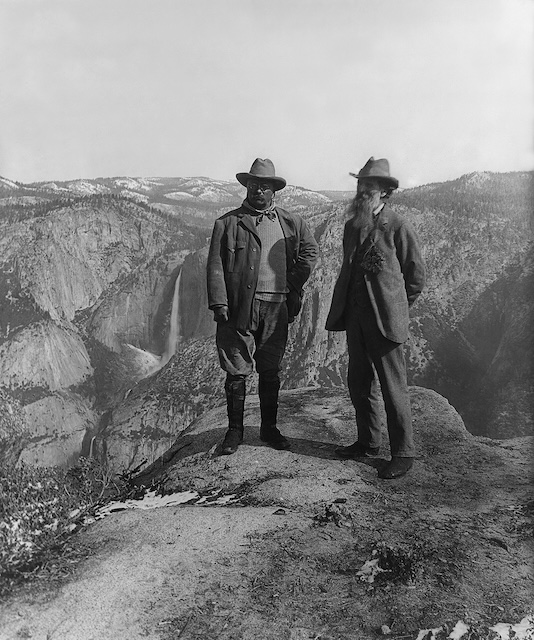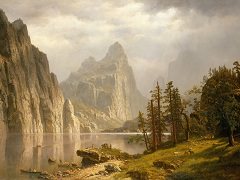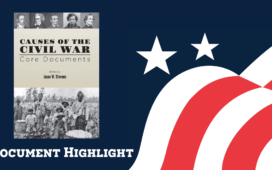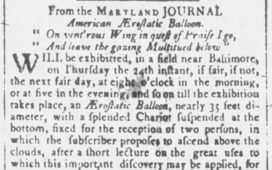On May 28, 1892, a group of university professors and interested citizens met in the San Francisco law office of Warren Olney to found what arguably became the nation’s most influential wilderness protection organization, the Sierra Club. Naturalist John Muir, whose popular magazine articles had done much to bring about the 1890 Congressional act creating Yosemite National Park, was unanimously named president of the new organization.
Muir in fact had been pressed into service by Robert Underwood Johnson, associate editor of the influential New York magazine The Century. Johnson, intent on recruiting Muir to the preservationist movement, had traveled to California to meet Muir in 1889. By then, Muir had been writing articles advocating conservation—and, to the extent possible, preservation of virgin wilderness—for fifteen years, but he had never attempted to form a political advocacy group. Possessing an unusual mixture of idealism and pragmatism, along with a natural charm and affinity for storytelling, Muir seemed the ideal spokesman for the burgeoning wilderness preservation movement. Muir, however, did not at first see himself as such a leader.
A largely self-taught botanist and geologist, Muir would happily have spent his life engaged in wilderness rambling, feeding his intellectual curiosity and nurturing his spiritual affinity with wild places. When he was ten years old, his family immigrated to America and settled on wooded tract in Wisconsin. As a boy Muir delighted in woodland rambling; but as a young adolescent he was expected to cut trees, clearing the land for farming. He worked hard but rebelled inwardly at the destruction of a habitat unlike any he’d seen in Scotland, where most of the land had long been tamed to grazing and farming. Breaking free of the parental yoke, he pursued a science degree at the university in Madison, WI but never finished, setting out instead to tour American wilderness on foot. Eventually making his way to California, he found work in the Sierra Nevada as a sheepherder, operating a sawmill (in, of all places, Yosemite Valley, where he was hired to make board lumber of pines downed in a fierce winter storm), and manufacturing wooden farm implements.
These varied activities made him keenly aware of the rapid exploitation of the nation’s remaining western wilderness areas. Sheep devoured the native wildflowers and shrubs in the publicly owned lands the herders used; mining polluted the mountain streams salmon needed for spawning. Lumbermen were eagerly cutting the massive redwoods and sequoias, while other entrepreneurs squatted in these remarkable forests, building flimsy hotels in hopes of cornering a new tourist trade that had been encouraged by the work of artists like Albert Bierstadt and photographers like Carleton Watkins and Eadweard Muybridge. Muir began writing descriptions of western wilderness for the popular magazines. His articles as a roving correspondent for San Francisco’s Evening Bulletin and other papers earned him a national reputation, but he did not become financially secure until his late thirties, when he married the daughter of a fruit farmer in Martinez, California, and began managing the family’s extensive orchards and vineyards. The marriage brought him domestic happiness but did not prevent him from leaving home in between harvests to explore new wilderness, especially the coast of Alaska, where he pursued his interest in glaciers as agents of continuous geological change, a view that was controversial at the time.

Fast forward to June 1889, when Muir went to a San Francisco hotel for the meeting Robert Johnson had requested. Muir immediately persuaded Johnson to decamp via train to Yosemite Valley, where the men marveled at the majestic mountains peaks and deplored the squalid valley community they encircled. At the time, Yosemite was under the control of a California state commission. Johnson began urging Muir to write a series of articles for the Century that would persuade Congress to designate the area as a national park. Hesitantly, Muir began the work, finally producing a series that captured Yosemite’s beauty and proposed the projected park’s borders. In the meantime, others had been lobbying to protect the area, home to trees that predated the Christian era, a marvel that, once cut, could not soon be regrown. Those interested in promoting railway tourism supported the effort, as did lowland farmers who depended for irrigation on the Merced and Twolumne Rivers that flowed down from the area around Yosemite. Shortly after Muir’s articles appeared, Congress passed the bill, adopting the boundaries Muir proposed. Although nearly two million acres of forested land were thus protected, the valley at the center remained under control of the California state commission.

The citizens meeting in Olney’s law office in 1892 felt the newly created park (along with a park in the southern Sierra later renamed Sequoia National Park, created by Congress just days before it protected Yosemite) needed a nongovernmental watchdog. Politicians would be subject to lobbying by commercial interests. Indeed, the Sierra Club was soon lobbying Congress to defeat a proposal to reduce the acreage of Yosemite National Park. The proposal, sprung from local business interests who were angry about the use of military patrols to protect the park from sheepherders and timber cutters, was defeated. Congress had voted to give the President authority to create national forest reserves in 1891, and Republican President Benjamin Harrison had soon thereafter used his power to set aside thirteen million acres. Muir himself felt that public forests (other than the ancient redwoods and sequoias) should be treated as “perennial fountains” and selectively harvested, with new planting to replace what was taken so that their usefulness could “be maintained unimpaired.” Throughout his life he balanced this pragmatic approach to conservation against an instinctual reverence for all living things that made him abhor sport hunting and reluctant even to crush a tarantula invading his campsite.
Muir remained President of the Sierra /Club until his death on December 24, 1914. Under his leadership, the Sierra Club did become an influential wilderness protection organization. It helped to persuade Congress to pass the 1905 American Antiquities Act, which allowed presidents to designate national “monuments” that preserved natural areas as landmarks of scientific, historic, and archaeological interest. This allowed Theodore Roosevelt to protect Mesa Verde, Devil’s Tower, the Grand Canyon, and Petrified National Forest. A year later, the club’s effort to get the valley at the center of Yosemite National Park under federal control passed Congress. Between 1908 and 1913, the club battled a proposal to build a dam in Hetch Hetchy Valley, which was within the boundaries of the Yosemite Park. Those urging the need to create a reliable water supply for San Francisco prevailed, leaving Muir disheartened. In a 1909 article, “Let Everyone Help to Save the Famous Hetch Hetchy Valley and Stop the Commercial Destruction Which Threatens Our National Parks,” Muir had written that the proposal to dam the Twolumne River and flood the valley it watered was equivalent to making “water tanks” of “the people’s cathedrals and churches, for no holier temple has ever been consecrated by the heart of man.” Although Muir tried to negotiate pragmatically and respectfully with business interests, he remained convinced that humanity’s need to recreate and expand the spirit in contemplation of wildness surpassed its need to build urban centers. These only distanced humanity from nature’s soul-healing influences.















